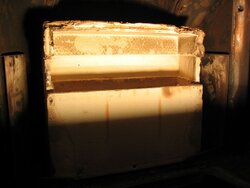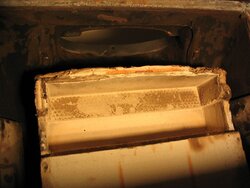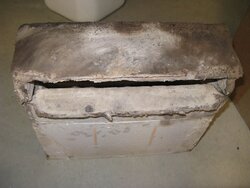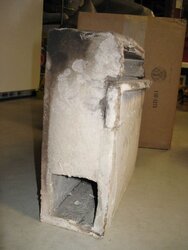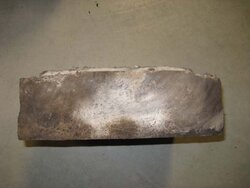Hello folks -
Today I removed my upper fireback from my VC 2550 CAT stove. Many know that I have been fighting an over fire situation where my stove with Primary Air closed will burn two splits and hit upwards of 700 degrees. Engaging the CAT (brand new Condar) I would not get the classic rumble. In short, the stove has not been behaving as it has since Christmas. I have had this for 7 years (installed new) and have learned its traits to the letter.
In my quest for looking for leaks, bad joints, etc, today I removed the upper fireback. Enclosed are pictures of my refractory assembly (CAT removed). Please tell me your opinions upon reviewing the photos. Thanks again to those who have been providing me outstanding assistance regarding this issue.
AGE
Today I removed my upper fireback from my VC 2550 CAT stove. Many know that I have been fighting an over fire situation where my stove with Primary Air closed will burn two splits and hit upwards of 700 degrees. Engaging the CAT (brand new Condar) I would not get the classic rumble. In short, the stove has not been behaving as it has since Christmas. I have had this for 7 years (installed new) and have learned its traits to the letter.
In my quest for looking for leaks, bad joints, etc, today I removed the upper fireback. Enclosed are pictures of my refractory assembly (CAT removed). Please tell me your opinions upon reviewing the photos. Thanks again to those who have been providing me outstanding assistance regarding this issue.
AGE


